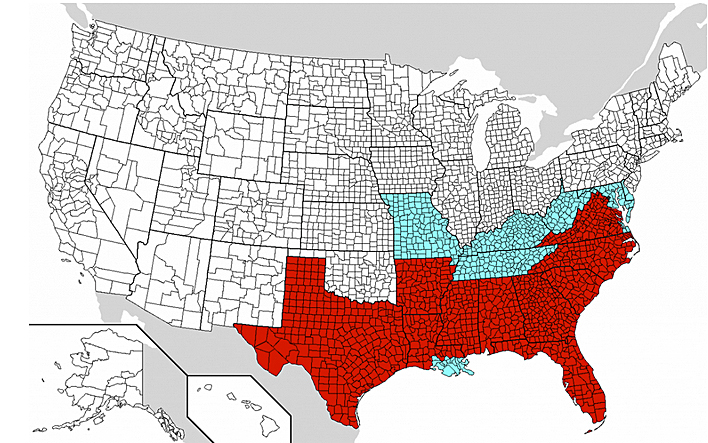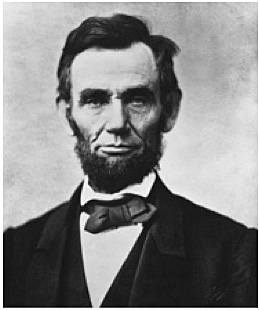
- Articles
Fighting Lost Causes in the American Civil War
In the celebrated PBS series by Ken Burns, The Civil War (1990), Southern historian Shelby Foote provides excellent anecdotes that embroider the documentary. In one of these vignettes, Foote mentions a dialogue between a Confederate and a Union soldier, in which the latter asks, “Why do you fight?” The Confederate soldier responds, “Because you are here.” Foote adds, “Which is not a bad answer!”

In another vignette, Foote opines, “The North was fighting with one arm tied behind its back.” He referred to the gigantic disparity in resources between North and South. That being the case, the North should have done well to untie both arms immediately after the First Battle of Bull Run (a.k.a., First Manassas; July 21, 1861), fought at the outskirts of Washington, D.C. It was here, incidentally, Brigadier General Thomas J. Jackson stood his ground, earned the nickname “Stonewall,” and passed through the mist of history into legend.
No Walk in the Park
Both armies were nearly equally matched at that first encounter. Both armies were inexperienced and poorly trained. After the disorganized engagement, though, the Union army was not only defeated, but its retreat degenerated into an inglorious rout. In fact, the road to the Capital was left wide open as Union soldiers panicked. The North should have then known that despite the disparity of resources, the war would be no walk in the park. President Abraham Lincoln saw the writing on the wall and called for the enlistment of another 500,000 men into the army. Enlistment was then no problem with Northern patriotism aroused. But two years later in 1863, after the Emancipation Proclamation had been pronounced, there were riots in New York and other Northern cities against the draft. The rioters had to be suppressed with force.
Initially, Lincoln had referred to the need for collecting duties and imposts in the South; then the preservation of the Union. Finally, he published the Emancipation Proclamation, which freed only the slaves in the rebellious states and turned the war into a moral crusade against slavery.

This Proclamation, though, was not issued until January 1, 1863, nearly two years after the outbreak of war and three months after the Union victory at the bloodiest campaign of the war, the Battle of Antietam (September 17, 1862).
High Protective Tariffs
Slavery was certainly a cause of the war, another was the high protective tariffs the North imposed on the South to protect and expand it’s manufacturing and industrial interests in competition with Europe.
In fact, the South seriously began to consider its economic position relative to the North as early as a generation earlier, at least since the imposition of “The Tariff of Abomination” of 1828 during the Presidency of John Quincy Adams. Again, under President Andrew Jackson (1829–1837), South Carolina raised the specter of possible civil war over the revenue tariff of 1832. The imposition of high protective tariffs threatened not only Southern cotton interests but also life in the South that depended on manufactured goods produced in and imported cheaper from Europe.
Tariffs meant that all the manufactured goods including farm machinery, tools, even clothes and textiles in which Southern cotton was used, had to be bought from the North at high prices. Those same goods better and cheaper when imported from, let’s say England, France, or Holland, became prohibitively more expensive because of the imposition of protective tariffs — protecting Northern interests at the expense of the South. The Morrill Tariff was no exception and it passed the Senate on March 2, 1861. Together with Lincoln’s inauguration’s speech two days later, the two events were sadly the last straws to break the camel’s back for the advent of civil war.(1,2)

In his inauguration speech, President Abraham Lincoln said: “The power confided in me will be used to hold, occupy, and possess the property, and places belonging to the government, and to collect the duties and imposts; but beyond what may be necessary for these objects, there will be no invasion — no using force against, or among the people anywhere.” So duties and imposts (i.e., tariffs) were again mentioned on the very eve of the conflict. The invasion would come after the events at Fort Sumter, April 12, 1861, when the South is believed to have been manipulated to fire the first shots in Charleston Harbor.(1,2)
As for slavery, Lincoln later wrote in a letter to Horace Greeley, August 22, 1862: “My paramount object in this struggle is to save the Union, and is not either to save or to destroy slavery. If I could save the Union without freeing any slave I would do it, and if I could save it by freeing all the slaves I would do it; and if I could save it by freeing some and leaving others alone I would also do that. What I do about slavery, and the colored race, I do because I believe it helps to save the Union.”(3)
Slavery — Was the Civil War Necessary?
Protective tariffs were so abhorrent to the South that the President of the Confederacy, Jefferson Davis, in his February 18, 1861 inaugural address, announced that the Southern economy would be based on free trade, and the Constitution of the Confederacy that followed prohibited protective tariffs and permitted only the imposition of revenue tariffs that were absolutely necessary to run the central Confederate government. Besides slavery, there were other unresolved issues such as states’ rights, the right of secession, and the resented high protective tariffs that kept the agricultural South subservient to the industrial North.
With the victory of the North, protective tariffs, posited Southern politicians, would be passed repeatedly and would make the North an industrial giant and financial colossus, while the rural South would remain agricultural, lagging behind in industry, commerce, wealth, and educational standards.
Peaceful emancipation by gradual manumission and the purchasing of the liberty of the human beings in bondage would have been morally sound, cheaper, and a more amicable solution than fighting a four-year sanguinary and fratricidal war. The war in fact left nearly 700,000 young men dead, the bloodiest war in American history with the possible exception of World War II.(4) Yes, the Northern victory preserved the Union and freed the slaves, but in its wake it destroyed not only the Southern infrastructure and economy, but also disrupted the lives of most citizens in the South — this included the vast majority of citizens (70% of Southerners) who did not actually own any slaves and who resented only Northern interference in Southern affairs. In the final analysis, it is true many Northern Union soldiers enlisted to fight for a noble ideal; many more because it was their patriotic duty to do so; others because, like Southerners, they were drafted. But the Confederate soldiers also fought to protect their homes and their way of life, not to defend slavery or the lofty issue of tariffs.
In the wake of Lincoln’s assassination, a revengeful Republican Reconstruction policy worsened the situation for both blacks and whites in the South. It was intended to punish rather than redress wrongs and not to improve relations between the former slaves and the white population. Thus, it left the South way behind the North in race relations, as well as dramatically lagging behind in the fields of finance, industry, manufacturing, commerce, not to mention education. No wonder the war and Reconstruction sowed the seeds of dissension and distrust for generations in the defeated and humiliated South towards a victorious and imperious North.
Failing Extrication, Fight a Lost Cause to the End!
The South fought for a lost cause, just like the Indigenous Americans in the West fought for a lost cause — the preservation of their culture and way of life. The South also fought for its economic survival. It was a pity the economy and the climate conspired to force the South to depend on the “peculiar institution” inherited from the European enslavers. The evil of slavery sooner or later, though, had to be abolished and eradicated. The North, inclined to finance, commerce, and manufacturing, was not at all dependent on the evil, and it was easy for them and their region to push for abolition, attaining a moral high ground while suffering no economic pain in return. The South wasn’t so fortunate. Southern economy was dependent on the evil, most citizens, deep inside, knowing the practice was wrong. Of the Founding Fathers, two generations earlier, Alexander Hamilton had harbored the strongest abolitionist sentiments. He had seen the evil up close in the counting houses of the Caribbean islands of Nevis and St. Croix, whence he came as a seventeen year-old prodigy. But as a leading American Founder, he moderated his participation in the movement placing the interest of the unity of the nation ahead of his own personal abolitionist beliefs. It’s ironic he was also the founder of the American economic system and industrial might that economically vanquished the South.
Although many historians point out that slavery was not dying but growing in the South and in new areas opened in the West, the truth is that the linear progression of history had condemned the peculiar institution to the dustbin of oblivion, sooner rather than later, as the example of Latin America, the Caribbean, and all of South America, including giant Brazil, clearly evinced. Abolition could have been accomplished without the terrible bloodshed. Emancipation, free trade, peaceful commerce and harmonious national unity would have allowed the South to catchup with the North economically, educationally, and achieve a better standard of living for future generations of Southerners, blacks and whites, all free.
But as events took place, the South saw no way it could extricate itself from the evil in time to prevent the impeding cataclysm.
Disparity of Resources but Not of Courage
What remains shocking is that despite the disparity in resources, Southern courage and superb generals extended the war for four incredible but desperate years. The North contained 71% of the population, 72% of the railroad mileage, 92% of iron and steel production, 85% of the factories, and 75% of the wealth of the nation. But the South fought on.

Moreover, immigrants were pouring into the North, 7 out of 8 settling in the industrial areas there. The Southern population of over 9 million consisted of 5.5 million whites and 4 million blacks (i.e., most of them slaves, who were left behind the lines to be watched by the women and old folk). The Northern population was 22 million.(5) Moreover, while Northern manufacturing was booming, Southern agriculture was stalling, falling behind. Northern tariffs had been hurting the South, leaving it behind economically. The South had needed diversification and modernization. Southern agriculture based on black slavery was not only wrong but also economically on the way out. Unfortunately, no effective statesmen arose from either North or South to speak up and make others see the way out of the dilemma. To the North goes the credit of fighting ultimately for a just and noble cause, the end of slavery, industrial progress, and an arguably good cause, the preservation of the Union. I say arguably because we must ask ourselves, is a Union (like human bondage) held and kept by compulsion and force a good thing? Let’s then have the political scientists argue that point.
To the South goes the credit of fighting nobly and with fortitude for an ultimately lost cause, an antebellum way of life (although supported by an ignoble institution), destined incontrovertibly to be gone with the wind; the credit of fighting for other ideals, not quite so noble, but good ideals nevertheless, when examined in the proper context — namely states’ right, free trade, and self-determination. When speaking of states’ rights I refer to the principle of the states having the right to be “the laboratories of democracy,” where governments can experiment with policy within the context of federalism and freedom. When I refer to free trade, I refer to today’s almost universal call for lifting trade barriers, ending protectionism, and promoting commerce on a global scale. When speaking of self-determination, I refer to a free people having the options to either remain part of a nation, as was the case with Scotland in the United Kingdom, or conversely, having the right to separate from a union and to be allowed to determine their own national destiny, pursuing their own happiness peacefully without the threat of force, intimidation, or coercion. The Confederacy did not invent these notions; nevertheless the South, to its credit, championed them before they were fashionable and fought for them valiantly in an uneven struggle for four arduous and desperate years.
References
1. Adams C. When in the Course of Human Events: Arguing the Case for Southern Secession. Rowman & Littlefield, 2000, p. 257.
2. DiLorenzo TJ. The Real Lincoln. Prima, 2002, p. 333. Also see: Lincoln’s Tariff War by TJ DiLorenzo, May 6, 2002. Available at: http://mises.org/library/lincolns-tariff-war.
3. Faria MA. Slavery and the Civil War. HaciendaPublishing.com, July 25, 2011. Available at: https://haciendapublishing.com/slavery-and-the-civil-war.
4. Civil War Trust — Civil War Facts. Available at: http://www.civilwar.org/education/history/faq.
5. Civil War Trust — North and South: Different Cultures, Same Country. Available at: http://www.civilwar.org/education/history/civil-war-overview/northandsou…
Written by Dr. Miguel Faria
Miguel A. Faria Jr., M.D. is Associate Editor in Chief and World Affairs Editor of Surgical Neurology International. He is a former Clinical Professor of Neurosurgery and Adjunct Professor of Medical History. Dr. Faria is the author of Cuba in Revolution: Escape From a Lost Paradise (2002). He has written numerous articles on the blessings of liberty and the venalities of totalitarianism, collectivism, and communism — all posted at his website: HaciendaPublishing.com.
This article can be cited as: Faria MA. Fighting Lost Causes in the American Civil War. HaciendaPublishing.com, December 7, 2014. Available at: https://haciendapublishing.com/fighting-lost-causes-in-the-american-civil-war.
The photographs used to illustrate this article came from a variety of sources and were added for the enjoyment of readers at HaciendaPublishing.com. A shorter version of this article also appeared in the Macon Telegraph, December 12, 2014.
Copyright ©2014 Miguel A. Faria, Jr., M.D.
3 thoughts on “Fighting Lost Causes in the American Civil War”
Meh. Gen. Lee wasn’t that great… but Union Generals were THAT bad! — LB (FB)
The North had many incompetent generals but towards the end it had three generals that were at least competent, but to say that Robert E. Lee wasn’t that great is ludicrous. Are you just trying to get attention, in my timeline friend? 😎 —Dr. Miguel Faria
He was a great tactician, probably better than Grant or Sherman. His only weakness was his thought that he was invincible because God was on his side. Several times he lost valuable manpower and equipment because he held ground when he should have retreated and regrouped. He admitted later he went against his tactical judgement several times because he felt an epiphany that he should hold ground.— BB (FB)
His mistake was that Lee underestimated the fire power of newer weapons, and it was the gamble at Gettysburg (and the loss of Stonewall with whom he relied) that sealed the fate of the South, which was anyway nowhere near matching the North in resources, men, industry, and wealth! He was definitely better than Grant and Sherman. Grant was like Soviet Gen. Zhukov that threw a lot of men into battle, irrespective of loses, and won by overwhelming force. And Sherman had minimal opposition. The South was exhausted! Neither Grant or Sherman were great tactician. They want by the use of overwhelming force irregardless of loses! In Sherman’s case also the application of total war!— Dr. Miguel Faria
The Southern states had seceded and drawn up their own constitution, one which forbade using government tariffs and revenues from being spent on subsidies for private commercial endeavors. As a result tariffs at Southern ports were much lower than in Northern ports. Fort Sumter was a Union fort located on sovereign CSA state soil and controlling access to South Carolina’s Charleston harbor. When, in the midst of ongoing negotiations for turning the fort over to South Carolina, Lincoln suddenly sent armed warships carrying troops and military supplies to reinforce the fort, He left South Carolina and the CSA little recourse but to open fire.— Chris Meissen
Several border states were prevented from seceding, such as Maryland and Kentucky, and some of these states were trying but were prevented from joining the Confederacy by Northern force of arms!— MAF
Also Missouri. Lincoln set troops into Missouri to drive the elected governor and legislature into exile in Arkansas and installed a puppet martial government in their place. The Union Secretary of State and the CSA state of South Carolina were negotiating repayment terms for the arms and other military supplies to be left behind when Ft. Sumter was expected to be ceded to South Carolina within the coming month or two. Then Lincoln surprised everyone by attempting to send ships with 300 troop reinforcements to Fort Sumpter. A look on Google Earth will make plain the strategic importance of the fort. As long as the Union had that fort on CSA soil it controlled the only deep water shipping channel into the major Southern port of Charleston, SC. Lincoln deliberately forced the South to fire first to defend their sovereignty.— Chris Meissen (FB)